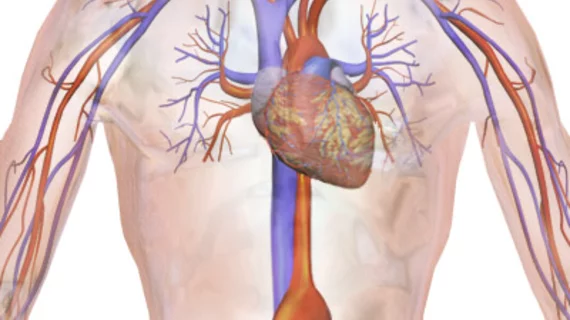New AAA findings suggest follow-up imaging protocols may need updating
A blood clot on the aortic wall leads to more accelerated and life-threating growth of abdominal aortic aneurysms (AAA), according to a “major” new study.
Researchers from China and California spearheaded the research, published Jan. 28 in Radiology. They found the specific clot—intraluminal thrombus—may serve as a marker to determine which patients require more aggressive treatment and follow-up imaging after their AAA diagnosis.
"An aneurysm with thrombus grows much faster than one without a thrombus," Chengcheng Zhu, PhD, with the University of California in San Francisco, said in a statement. “Our study looked at a large number of patients with a relatively long follow-up to confirm that thrombus is a new risk factor that may be potentially reported by radiologists."
Abdominal aneurysms arise when a bulge forms in the area of the artery that stretches through the abdomen. Nearly 200,000 people in the U.S. are diagnosed with AAA each year. And over time, this can cause the aortic wall to weaken and eventually rupture.
Repairing this burst requires surgery, and is based on the diameter of the aneurysm. Those measuring less than 5.5 centimeters are typically monitored via imaging, but a number of these smaller aneurysms go on to rupture, Zhu and colleagues noted. Only aneurysms larger then 5.5 cm are recommended for surgery.
The investigators assessed 225 men with AAA using high-resolution, cross-sectional imaging combined with CT or MRI. On average, Zhu et al. followed-up with these patients for more than three years. More than half of the cohort had an intraluminal thrombus.
The aneurysms in patients with intraluminal thrombus were larger at the onset of the study, and grew 2 millimeters per year, twice as fast as the 1mm per year recorded in those without that specific thrombus, the analysis showed.
Zhu believes this accelerated growth is likely caused by “harmful” biochemical effects on the aortic vessel wall. When the wall is covered, he noted, the loss of oxygen weakens the area, making the aneurysm more likely to grow quicker and rupture.
Current protocols for follow-up imaging do not take thrombus into account, but the new findings suggest that may need to change, Zhu said.
"A patient at high risk may need closer monitoring," he added. "If in patients with a thrombus the aneurysm grows twice as fast, then shortening the surveillance interval could be considered."

